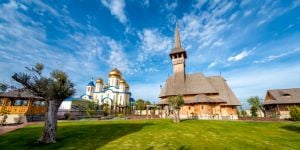North Cyprus is one of the last unspoilt, most beautiful and popular island holiday destinations in the Mediterranean. There are plenty of activities for all age groups; couples, families with children, adults and young. Although North Cyprus is a Muslim country, history has left them with some important religious sites with great significance for Christians.
If you are searching for North Cyprus hotels to book your own, Kyrenia is centrally situated for religious sites and might be a good base. There are three important sites to visit, St Barnabas in the east, just north of Famagusta and near to Salamis, the Monastery of Apostolos Andreas situated well out east, at the very tip of the Karpaz peninsula and St Mamas church in Guzelyurt. The history of these churches is fascinating, each with its own legend, and all of them with their own special place in the Christian religion
Firsts of all, you can head out eastwards to St Barnabus to see the monastery and the tomb where the sarcophagus of the saint now rests. Inside the monastery, apart from the modern icons and murals telling the story of St Barnabas, there is an excellent archaeological museum.
St Barnabas was credited with introducing Christianity to Cyprus. St Barnabas was a Jew born in Salamis. He was sent off to Jerusalem to further his education but at some stage was converted to Christianity. On his return, together with St Paul, he started to preach Christianity which angered the Jewish community. He was killed by the Jews in 45AD and his body disposed of in the marshes. Watched unobserved by Christian converts, his body was secretly recovered and buried under a carob tree to the west of Salamis with a copy of the Gospel of Matthew on his breast.
The location of the body came to Bishop Anthemios in a dream, some 432 years later. He gave orders to explore the spot and sure enough the bones of St Barnabas were discovered complete with the Gospel. Archbishop Anthemios took his evidence to Emperor Zeno in Constantinople who granted funds for the construction of a monastery on the site and granted the Church of Cyprus independence from the Patriarch of Constantinople.
We do our best to provide accurate and up to date information. However, if you have noticed any inaccuracies in this article, please let us know in the comments section below.









